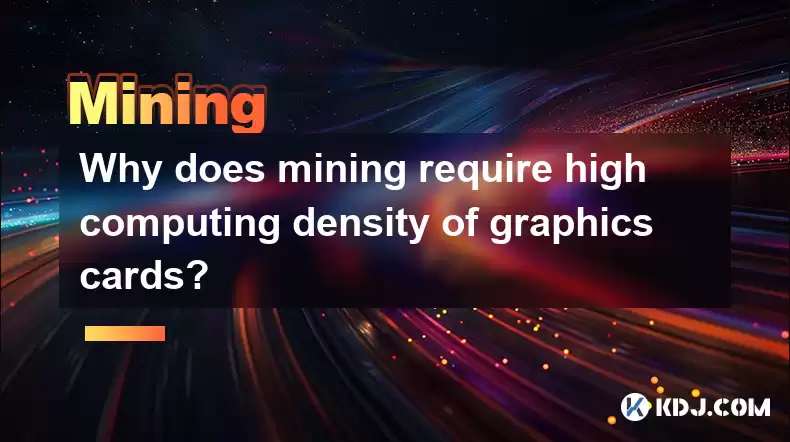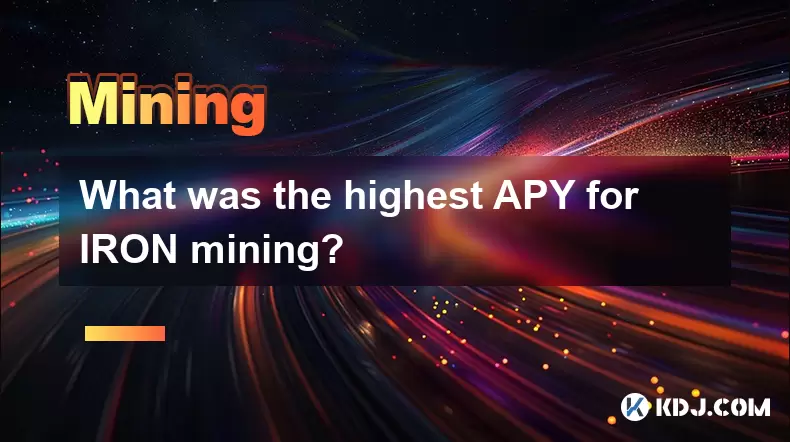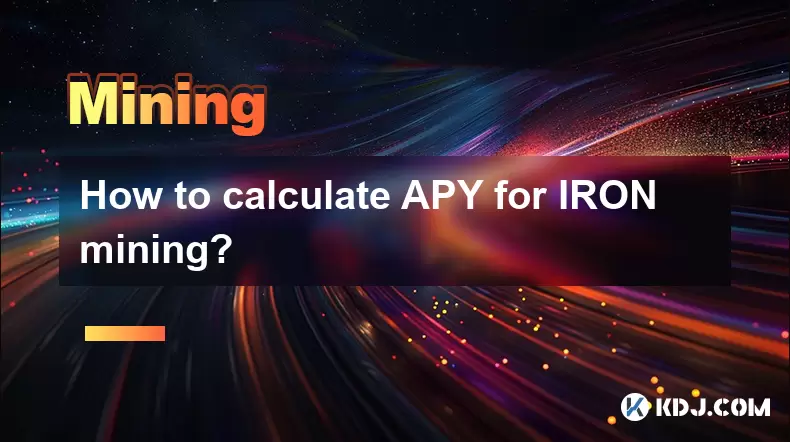-
 Bitcoin
Bitcoin $115000
0.12% -
 Ethereum
Ethereum $3701
4.50% -
 XRP
XRP $3.081
2.99% -
 Tether USDt
Tether USDt $0.0000
-0.01% -
 BNB
BNB $767.9
1.45% -
 Solana
Solana $169.5
3.13% -
 USDC
USDC $0.9999
0.01% -
 Dogecoin
Dogecoin $0.2106
4.30% -
 TRON
TRON $0.3334
1.62% -
 Cardano
Cardano $0.7564
2.54% -
 Stellar
Stellar $0.4165
0.76% -
 Hyperliquid
Hyperliquid $38.75
0.25% -
 Sui
Sui $3.593
3.00% -
 Chainlink
Chainlink $17.08
3.59% -
 Bitcoin Cash
Bitcoin Cash $573.6
4.35% -
 Hedera
Hedera $0.2508
-0.84% -
 Avalanche
Avalanche $23.07
6.46% -
 Ethena USDe
Ethena USDe $1.001
-0.02% -
 Litecoin
Litecoin $120.8
8.17% -
 UNUS SED LEO
UNUS SED LEO $8.943
-0.32% -
 Toncoin
Toncoin $3.400
-5.60% -
 Shiba Inu
Shiba Inu $0.00001255
1.54% -
 Uniswap
Uniswap $9.908
6.32% -
 Polkadot
Polkadot $3.718
2.10% -
 Monero
Monero $303.0
-0.74% -
 Dai
Dai $0.9999
-0.02% -
 Bitget Token
Bitget Token $4.392
0.91% -
 Cronos
Cronos $0.1403
6.31% -
 Pepe
Pepe $0.00001076
1.13% -
 Aave
Aave $267.2
1.80%
Why does mining require high computing density of graphics cards?
GPUs are favored for mining due to their high computing density, enabling parallel processing of hash calculations, though they consume significant power.
Apr 04, 2025 at 10:49 am

Mining cryptocurrencies, particularly those that use proof-of-work (PoW) consensus mechanisms like Bitcoin and Ethereum, requires significant computational power. The reason mining necessitates high computing density of graphics cards lies in the nature of the cryptographic puzzles that miners need to solve. These puzzles are designed to be computationally intensive, requiring miners to perform numerous hash calculations per second. Graphics cards, or GPUs, are well-suited for this task due to their ability to handle parallel processing. This means they can execute multiple calculations simultaneously, making them more efficient than traditional CPUs for mining.
Understanding the Role of GPUs in Mining
Graphics Processing Units (GPUs) are designed to handle complex graphical computations, which makes them ideal for the parallel processing required in cryptocurrency mining. Unlike Central Processing Units (CPUs), which are designed for sequential processing, GPUs can manage thousands of threads at once. This parallel processing capability allows GPUs to perform the repetitive hash calculations needed for mining much faster than CPUs. The high computing density of GPUs refers to their ability to pack a large number of processing cores into a small space, which enhances their performance in mining operations.
The Evolution of Mining Hardware
The use of GPUs for mining began as an alternative to CPUs, which were initially used for mining but were quickly outpaced by GPUs due to their superior performance. As the demand for mining power increased, the industry saw the development of more specialized hardware like Field-Programmable Gate Arrays (FPGAs) and Application-Specific Integrated Circuits (ASICs). However, GPUs remain popular for mining certain cryptocurrencies due to their versatility and ability to mine a variety of coins. The high computing density of GPUs continues to make them a viable option for miners, especially in the early stages of new cryptocurrencies.
Why High Computing Density Matters
High computing density is crucial in mining because it directly impacts the number of hash calculations a miner can perform per second. The more hash calculations a miner can perform, the higher their chances of solving the cryptographic puzzle and earning the block reward. GPUs with high computing density can pack more processing cores into a smaller space, which translates to higher hash rates and better mining efficiency. This efficiency is particularly important in competitive mining environments where miners are constantly vying to solve the puzzle first.
The Technical Aspects of GPU Mining
The technical prowess of GPUs in mining stems from their architecture. GPUs are equipped with thousands of smaller, more efficient cores compared to the fewer, more powerful cores found in CPUs. These cores are optimized for tasks that can be broken down into smaller, independent pieces, such as the hash functions used in mining. The high computing density of GPUs allows them to perform these tasks at a much higher rate than CPUs. Additionally, GPUs are designed to handle high levels of memory bandwidth, which is essential for the rapid data processing required in mining operations.
Energy Efficiency and GPUs
While GPUs offer high computing density, they also consume significant amounts of power. The energy efficiency of GPUs is a critical factor for miners, as the cost of electricity can significantly impact profitability. Modern GPUs are designed to balance high performance with energy efficiency, but miners must still carefully consider the power consumption of their hardware. The high computing density of GPUs allows them to achieve a better hash rate per watt compared to CPUs, making them a more energy-efficient option for mining despite their higher overall power consumption.
The Impact of Algorithm Changes on GPU Mining
Cryptocurrency algorithms can change over time, affecting the viability of GPU mining. For instance, Ethereum's transition from Ethash to Proof of Stake (PoS) has significant implications for GPU miners. Ethash was designed to be GPU-friendly, but the shift to PoS means that GPUs will no longer be used for Ethereum mining. However, other cryptocurrencies continue to use algorithms that are well-suited for GPU mining, ensuring that the high computing density of GPUs remains relevant. Miners must stay informed about algorithm changes and adapt their hardware accordingly to remain competitive.
The Role of Cooling in GPU Mining
High computing density in GPUs generates significant heat, which can affect their performance and longevity. Effective cooling is essential for maintaining the efficiency of GPUs in mining operations. Miners often use specialized cooling solutions, such as liquid cooling systems, to manage the heat generated by their GPUs. Proper cooling not only helps maintain the high performance of GPUs but also extends their lifespan, making it a critical consideration for miners who rely on the high computing density of their hardware.
The Economics of GPU Mining
The economic viability of GPU mining depends on several factors, including the cost of the hardware, electricity prices, and the value of the cryptocurrency being mined. The high computing density of GPUs can make them more cost-effective than other types of hardware in certain scenarios. Miners must perform detailed calculations to determine whether the potential rewards from mining outweigh the costs of running their GPUs. The high computing density of GPUs can provide a competitive edge, but miners must also consider the broader economic landscape when deciding whether to invest in GPU mining.
The Future of GPU Mining
As the cryptocurrency industry evolves, the role of GPUs in mining may change. New consensus mechanisms, such as Proof of Stake, are being developed that do not require the high computing density of GPUs. However, many cryptocurrencies will likely continue to use Proof of Work algorithms that are well-suited for GPU mining. The high computing density of GPUs ensures their relevance in the mining community, but miners must remain adaptable to changes in the industry. The future of GPU mining will depend on the continued development of cryptocurrencies and the mining hardware that supports them.
Common Questions and Answers
What is the significance of high computing density in GPUs for mining?
High computing density in GPUs allows them to perform a large number of hash calculations per second, increasing the chances of solving the cryptographic puzzle and earning the block reward.
Why are GPUs preferred over CPUs for mining?
GPUs are preferred for mining because they can handle parallel processing, allowing them to perform many calculations simultaneously, which is more efficient than the sequential processing of CPUs.
How does the energy efficiency of GPUs impact mining?
The energy efficiency of GPUs is crucial for mining profitability, as the cost of electricity can significantly affect the overall costs. GPUs offer a better hash rate per watt compared to CPUs, making them more energy-efficient despite their higher power consumption.
What role does cooling play in GPU mining?
Cooling is essential for maintaining the performance and longevity of GPUs in mining operations. Effective cooling solutions help manage the heat generated by the high computing density of GPUs, ensuring they operate efficiently.
How do algorithm changes affect GPU mining?
Algorithm changes can impact the viability of GPU mining. For example, Ethereum's shift from Ethash to Proof of Stake means GPUs will no longer be used for Ethereum mining. Miners must adapt to these changes to remain competitive.
What is the economic impact of using GPUs for mining?
The economic viability of GPU mining depends on factors such as hardware costs, electricity prices, and cryptocurrency value. The high computing density of GPUs can provide a competitive edge, but miners must carefully calculate the potential rewards against the costs.
What is the future outlook for GPU mining?
The future of GPU mining depends on the development of cryptocurrencies and their consensus mechanisms. While new mechanisms like Proof of Stake may reduce the need for GPUs, many cryptocurrencies will likely continue to use Proof of Work algorithms that benefit from the high computing density of GPUs.
Disclaimer:info@kdj.com
The information provided is not trading advice. kdj.com does not assume any responsibility for any investments made based on the information provided in this article. Cryptocurrencies are highly volatile and it is highly recommended that you invest with caution after thorough research!
If you believe that the content used on this website infringes your copyright, please contact us immediately (info@kdj.com) and we will delete it promptly.
- Velo Universe, DEX, and DeFi Security: Navigating the Future of Decentralized Trading
- 2025-08-05 09:25:13
- Bitget Wallet Revolutionizes Solana with Gas-Free Transactions: A New Era for DeFi
- 2025-08-05 09:25:13
- Ozak AI, Crypto Boom, and ROI Potential: Is This the Next Big Thing?
- 2025-08-05 09:25:24
- Solana's ETF Hopes & the All-Time High Chase: Is SOL Set to Soar?
- 2025-08-05 09:25:24
- Coinbase's Brian Armstrong and the Art of Focused Work: A Deep Dive
- 2025-08-05 09:25:30
- Uniswap Price Prediction: Bullish Reversal on the Horizon?
- 2025-08-05 09:25:30
Related knowledge

What was the highest APY for IRON mining?
Jul 23,2025 at 05:14am
Understanding IRON Token and Its Mining MechanismThe IRON token is a stablecoin that operates within the Iron Finance ecosystem, primarily on blockcha...

What is impermanent loss in IRON pools?
Jul 23,2025 at 09:00am
Understanding Impermanent Loss in the Context of IRON PoolsImpermanent loss is a phenomenon that affects liquidity providers in decentralized finance ...

How to claim rewards from IRON mining?
Jul 23,2025 at 02:21pm
Understanding IRON Mining and Reward MechanismsIRON Finance operated as a decentralized finance (DeFi) protocol on the Polygon and Binance Smart Chain...

How to claim rewards from IRON mining?
Jul 29,2025 at 05:07am
Understanding IRON Mining and Reward MechanismIRON is a dual-token system designed to stabilize the value of a synthetic asset through a combination o...

IRON mining tutorial for beginners
Jul 27,2025 at 12:01am
What Is IRON and How Does It Work in the Cryptocurrency Ecosystem?IRON is a cryptocurrency token that operates on the Binance Smart Chain (BSC) and is...

How to calculate APY for IRON mining?
Jul 28,2025 at 09:49am
Understanding APY in the Context of IRON Token MiningWhen engaging in IRON token mining within decentralized finance (DeFi) platforms, Annual Percenta...

What was the highest APY for IRON mining?
Jul 23,2025 at 05:14am
Understanding IRON Token and Its Mining MechanismThe IRON token is a stablecoin that operates within the Iron Finance ecosystem, primarily on blockcha...

What is impermanent loss in IRON pools?
Jul 23,2025 at 09:00am
Understanding Impermanent Loss in the Context of IRON PoolsImpermanent loss is a phenomenon that affects liquidity providers in decentralized finance ...

How to claim rewards from IRON mining?
Jul 23,2025 at 02:21pm
Understanding IRON Mining and Reward MechanismsIRON Finance operated as a decentralized finance (DeFi) protocol on the Polygon and Binance Smart Chain...

How to claim rewards from IRON mining?
Jul 29,2025 at 05:07am
Understanding IRON Mining and Reward MechanismIRON is a dual-token system designed to stabilize the value of a synthetic asset through a combination o...

IRON mining tutorial for beginners
Jul 27,2025 at 12:01am
What Is IRON and How Does It Work in the Cryptocurrency Ecosystem?IRON is a cryptocurrency token that operates on the Binance Smart Chain (BSC) and is...

How to calculate APY for IRON mining?
Jul 28,2025 at 09:49am
Understanding APY in the Context of IRON Token MiningWhen engaging in IRON token mining within decentralized finance (DeFi) platforms, Annual Percenta...
See all articles

























































































